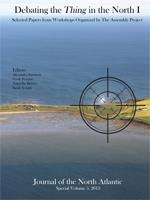It is a commonplace notion of Anglo-Saxon studies that by the 11th century, and perhaps very much earlier, English shires were subdivided into administrative territories known as “hundreds” or “wapentakes”. These units consisted of groups of vills brought together for fiscal, judicial, and other purposes, and were commonly named after their meeting-places—“moots”. Both these meeting-places and the administrative territories to which they belonged are the subject of a three-year interdisciplinary research project funded by the Leverhulme Trust—“Landscapes of Governance: Assembly Sites in England, 5th–11th Centuries”. Landscape analysis carried out by this project suggests that the hundredal pattern of eastern England as it existed in 1086 preserves a complex palimpsest of older and newer elements, reflecting its convoluted evolution. This paper describes evidence for the hundredal patterns of the southern Danelaw in order to consider the West Saxon, Mercian, and Scandinavian influences on the administrative landscape of this region.
How to translate text using browser tools
1 October 2013
Governance at the Anglo-Scandinavian Interface: Hundredal Organization in the Southern Danelaw
John Baker,
Stuart Brookes
ACCESS THE FULL ARTICLE

Journal of the North Atlantic
Vol. 2013 • No. sp5
2013
Vol. 2013 • No. sp5
2013




